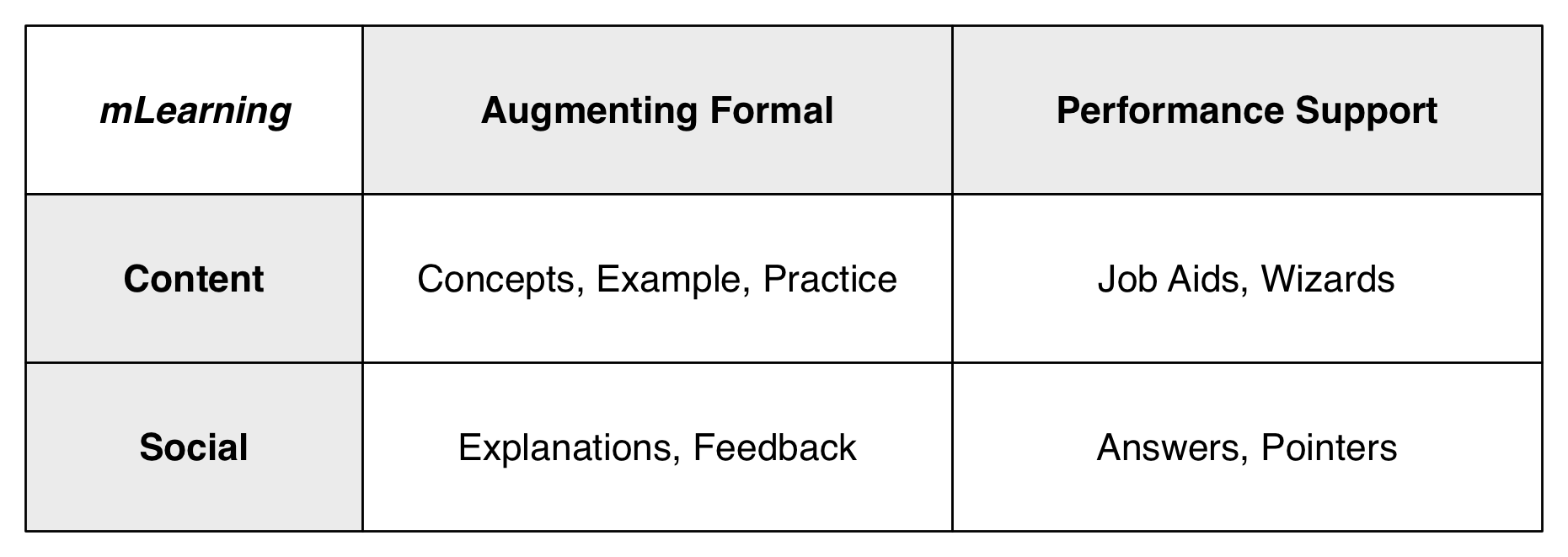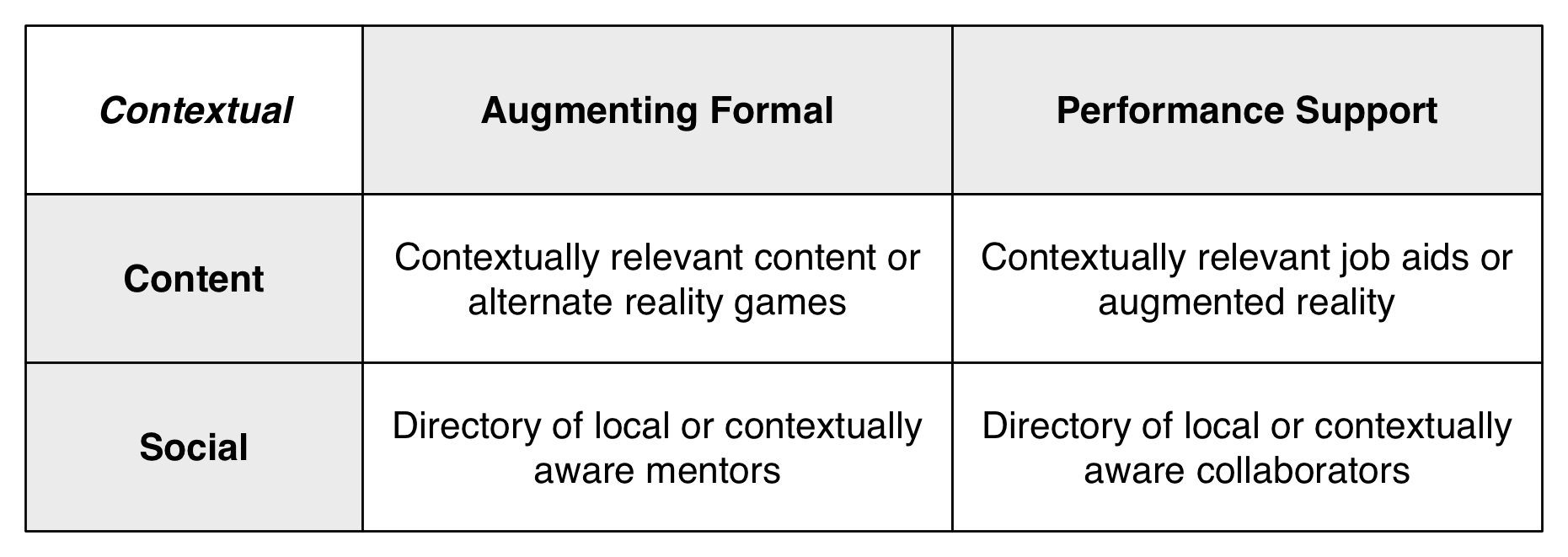It’s appropriate to look back at the year, here at the end of it. Reflection is a powerful and all-too-neglected tool. My year started off with a bit of travel and ended up with a lot of thought, writing, and preparation.
I started off with a bang, with two separate trips for presentations in Saudi Arabia with a few weeks of each other (phew!). The second included a paper that was a stab at rethinking formal learning: Redesigning Design (warning, PDF). It integrated my previous discussion of activity-centered learning with backwards design. And visiting foreign countries is something I enjoy, if not getting there ;).
I also presented at a wide variety of events, from regular venues like ASTD‘s TechKnowledge and ICE, and the eLearning Guild‘s Learning Solutions, mLearnCon, Performance Support Symposium, and DevLearn. More unique opportunities included the Professional Association of College Trainers and the International Conference on College Teaching and Learning. I attended Association for Educational Communications and Technology just to hear what’s happening on the academic side.
I always enjoy such opportunities. The most interesting aspect to me are the discussions that emerge after sessions, whether I’m the one presenting or I’m getting a chance to listen to someone else. The conversations in-between are also interesting, with colleagues old and new. Having a chance to mingle informally adds a valuable component to professional interactions.
Which was the driving force to attend a couple of retreats that are a different sort of professional reflection. This past year I attended Up to All of Us, and a second, similar, get together, both for the second time. These were opportunities to recharge and connect with like-minded colleagues. The ability to listen and interact in natural settings over an extended period is a separately valuable type of interaction.
Some of my best interactions came online in small groups, not least the Internet Time Alliance (the rest of you know who you are). The chance to interact with colleagues like Jay, Jane, Charles, and Harold continues to be a fabulous boon. My only regret is that we didn’t quite get things going the way I’d originally hoped we would. Despite the intellectual firepower, we didn’t converge on a unified model until too late. I admit my limitation in that I couldn’t really be prepared to ‘go to market’ until we had a core framework that would serve as the basis for tools, a book, etc. When we finally did, it was too late as everyone had gone off in their own directions, of need. The model is still important, and will be revisited in the forthcoming tome, and while it can serve as a basis for us working together (we’re still an entity, and available), but the real benefit to us is the continued opportunity to interact intellectually as well as personally.
I engaged in client work as well, of course, which is yet another powerful opportunity to learn, coupled with the opportunity to contribute. I was fortunate to engage with a variety of different organizations in facilitating design and strategy, including some mobile work. I like it when I can help clarify concepts, leading to tighter design, as well as raise the full spectrum of issues leading to more comprehensive strategies. I really enjoy getting into specific contexts, coming to grips with the issues, looking for matching models and frameworks, and systematically working through them to provide innovative solutions. Not when you’re doing the ordinary, but when you are uncertain what’s needed, or need to take it up a notch, is where I’ve been able to add real value.
I spent much of the latter part of the year working on my next book, to be out this coming year. I’m not happy with the state of the industry, nor the pace of change, so the book and another initiative (stay tuned) are a couple of stabs at trying to make things better. If you’re reading this, you’re more likely part of the solution than the problem, of course ;).
I’d also agreed to do a number of chapters in books and articles, so as soon as the book manuscript was done, I had to scramble to meet my other deadlines. As well as presentations for some of this coming year’s commitments; a topic for another post. You’ll see more writing emerging in articles, chapters, etc, soon. Duck!
Personal life was not neglected, I took a couple of weeks off this summer to travel with the family on an East Coast US History tour, from Boston, through New York City, to DC, with a side trip to Gettysburg. It was not only pleasant, but also a learning experience in many ways, both seeing new things, and seeing them through different eyes. I also spent some time in the wilderness, backpacking through Yosemite National Park, a different sort of retreat, but equally valuable. We also dealt with the passing of my mother, which was not unexpected. It’s odd to finally be the eldest, the patriarch as it were.
I have to say it was a good year, despite the challenges. And it leads me to be optimistic, looking forward, as is my wont. I hope that, as you look back on your year, you find insight, inspiration, and satisfaction.

